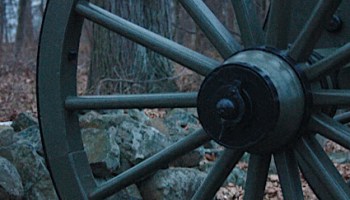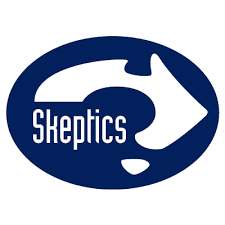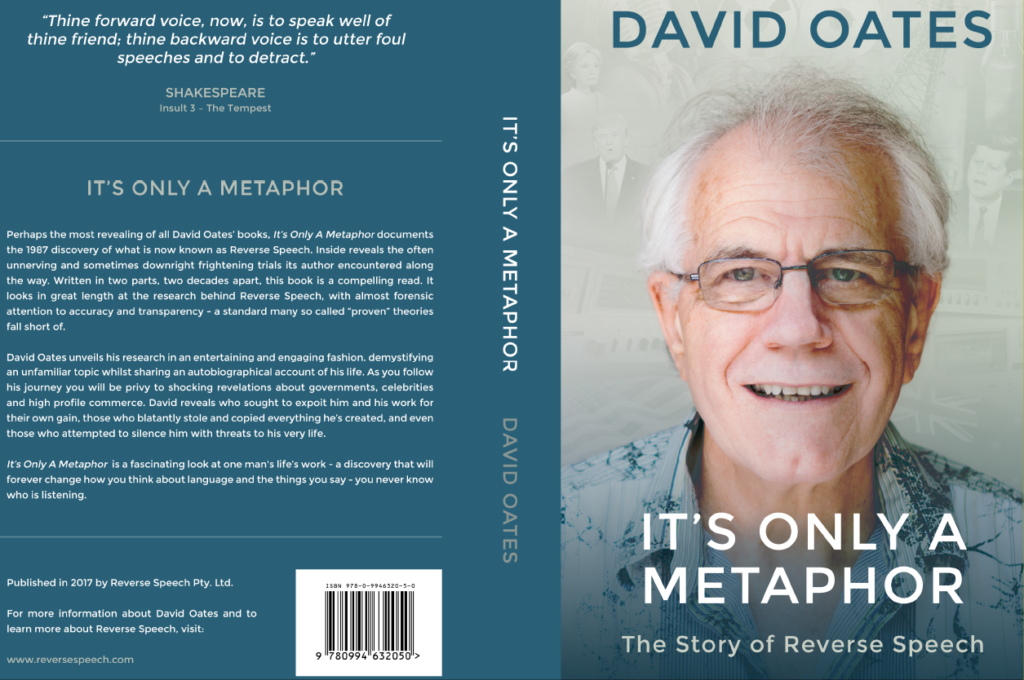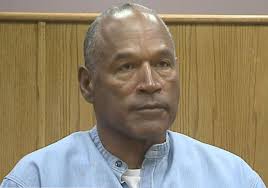
Exploring The Metaphor Of Wheel
By Rhonda C.
Exploring The Metaphor Of Wheel – It is not uncommon to hear someone use the phrase, “I don’t want to reinvent the wheel.” That expression has come to mean why do what has already been done and works flawlessly? It is easy to take for granted all the amazing tools we have gained from such a simple invention. The word wheel has come to represent both literal and symbolic meanings from the inception. Of course, there is also a more esoteric connotation such as the wheels related to the chakra wheels. Interestingly, one of the definitions for the word wheel in the dictionary notes that “many of our metaphorical expressions develop from our perceptions of the body.”
Most sources credit the invention of the wheel to ancient Mesopotamia around 3500 BC. The first wheel is believed to be a potting wheel that was used to move food and water. Before long a wooden wheel was created from planks of wood. The Sumerians later improved upon the wheel and that was a literally a great turning point in civilization.
According to etymonline.com, the word wheel can be used as a noun or verb and has a history dating back to at least 1200 ac.
wheel (v.) “to turn like a wheel,” c. 1200, from wheel (n.); transitive sense attested from late 14c. Related: Wheeled; wheeling.
wheel (n.) Old English hweol, hweogol “wheel,” from Proto-Germanic *hwewlaz (source also of Old Norse hvel, Old Swedish hiughl, Old Frisian hwel, Middle Dutch weel), from PIE *kw(e)-kwl-o- “wheel, circle,” suffixed, reduplicated form of root *kwel- (1) “revolve, move round; sojourn, dwell.”
It is interesting to note all the words that have wheel in their name such as water-wheel, wheel-house, wheelchair, pin wheel, wheelie, and steering wheel. Not to mention, the well known expression “fifth wheel” which is considered an undesirable description in modern day terms?
The etymology of the word wheel can be traced to the Proto-Indo- European root kwel. This root word is the origin of many words that are used daily in communication such as colony, culture and cycle. Kwel is also connected to tele means far as in space and time or in reference to completing a cycle. Words like telepathy, telegraph, and telescope all have evolved from the same root of kwel.
Biblical uses of Wheel
In biblical references, the meaning of wheel has great significance. Wheel is used at least 32 times including references to a potter’s wheel. The Hebrew word for wheel is galgal which can mean a wheel, whirl or whirlwind.
A biblical example of the word wheel is in Ezekiel Chapter 1:15-21. This passage describes a vision that Ezekiel had where he uses the word wheel five times. These verses are rich in wheel metaphor as the wheels not only rotate but give the illusion of lifting or moving from the earth. The passage describes a wheel inside of a wheel, similar to a gyroscope. The number four is notable also as many vehicles have four wheels and Ezekiel’s vision has creatures who appears to have four faces. Other interpretations of this chapter list the faces as that of a man, ox, lion and eagle which may have significance as other metaphors.
The lines below, though cryptic, certainly evoke a sense of movement and energy. Line 21, to me, conveys a feeling of being surrounded by a wheel of light or energy. The description is similar to that of the Mer-Ka-Ba in Egyptian texts which correlate to what some call a Hebrew chariot. Explanations suggest that this is a light body that transports the body between space and time. Though translations vary, the Mer-Ka-Ba or Hebrew chariot appears to be similar concepts and function much like Ezekiel’s vision of the wheels.
15Now as I beheld the living creatures, behold one wheel upon the earth by the living creatures, with his four faces.
16The appearance of the wheels and their work was like unto the color of a beryl: and they four had one likeness: and their appearance and their work was as it were a wheel in the middle of a wheel.
17When they went, they went upon their four sides: and they turned not when they went.
18As for their rings, they were so high that they were dreadful; and their rings were full of eyes round about them four
19And when the living creatures went, the wheels went by them: and when the living creatures were lifted up from the earth, the wheels were lifted up.
20Whithersoever the spirit was to go, they went, thither was their spirit to go; and the wheels were lifted up over against them: for the spirit of the living creature was in the wheels.
21When those went, these went; and when those stood, these stood; and when those were lifted up from the earth, the wheels were lifted up over against them: for the spirit of the living creature was in the wheels.
Wheel in Hinduism
In Sanskrit the word wheel is chakra. In the physical body, there are seven chakras starting at the root or base of the spine going up to the crown of the head. Each chakra correlates to the system it is next including the organs, veins etc. It is believed that these chakras or spinning wheels move energy throughout the body. If a chakra is blocked by disease or through dysfunction it will affect the entire system. Each chakra has a designated color and is dedicated to an aspect of life such as our personal power or security. The chakra system goes much deeper into the metaphysical and extends above and below the earth.
Native American use of Wheel
Stone structures looking similar to the diagram of a bicycle wheel have been found all over the northern United States and parts of Canada. With over 70 known sites, the largest is in Big Horn, Wyoming and it is 75 feet in diameter and resembles a bicycle tire with 28 spokes. This monument is believed to be over 7000 years old. A bit of mystery surrounds theses wheels as no record of their purpose has ever been found.
There may be some astrological significance depending on where the “spokes” in the wheel are placed. Wheels divided into four sections might represent the seasons, elements or energies. Modern day use of the medicine wheel is a place for sacred ceremonies and spiritual quests.
Shakespeare’s Use of the Wheel
- wheel(n) unclear meaning…song refrain or spinning wheel
- wheel(v) turn to face in new direction, circle round
- wheels, on running smoothly, providing easy life
Shakespeare’s work includes the word wheel 21 times in 23 speeches. Use of the wheel often referred to the status in life with the noblemen filling the top of the wheel and the poor at the bottom. If the goddess chooses to spin the wheel, it could obviously result in a reversal of fortune. In King Lear the quote, “The wheel is come full circle” is an example of the wheel being spun, but also implies a karmic turn also.
Japanese Folklore
There are several mythical creatures who take on the appearance of a wheel. I also discovered modern day video games with characters that have a wheel as part of their makeup. It is possible that many of these characters are connected to Wanyūdō, also known as “firewheel” or “soul taker.” The myth dates back to the Heian period and is about a figure whose form a burning ox cart wheel is bearing the face of a tormented man. This made me think of Ezekiel’s wheel and the face of the man.
Greek Mythology
Ixion, a king in Greek mythology, was punished by Zeus and forced to be tied to a spinning wheel of fire. The wheel can be used as a symbol for punishment.
Fortuna is a goddess often pictured “veiled” and is recognized as the symbol of luck or fortune. It is said that she governs the four stages of life and sometimes in pictured inside of a wheel.
Buddhist Dharma Wheel
The Dharma Wheel is one of the oldest symbols which date back to 304BC. Some of these wheels still exist in on sacred pillars in India. Below is a quote of a possible interpretation of the Dharma Wheel which I am including because of all the numerology that connects to other wheel symbolism:
- The circle, the round shape of the wheel, represents the perfection of the dharma, the Buddha’s teaching.
- The rim of the wheel represents meditative concentration and mindfulness, which hold practice together.
- The hub represents moral discipline. The three swirls often seen on the hub are sometimes said to represent the Three Treasures or Three Jewels–Buddha, dharma, sangha. They may also represent joy.
The spokes signify different things, depending on their number:
- When a wheel has four spokes, which is rare, the spokes represent either the Four Noble Truths or the four dhyanas.
- When a wheel has eight spokes, the spokes represent the Eightfold Path. An eight-spoke wheel is most common form of the wheel in Buddhism.
- When a wheel has ten spokes, the spokes represent the ten directions–in effect, everywhere.
- When a wheel has twelve spokes, they represent the Twelve Links of Dependent Origination.
- When a wheel has 24 spokes, they represent the Twelve Links of Dependent Origination plus the reversing of the Twelves Links and liberation from samsara.
- When a wheel has 31 spokes, the spokes represent the 31 realms of existence from ancient Buddhist cosmology.
Bhavacakra
This elaborate symbol which means “wheel of life” is painted outside of Tibetan and Buddhist temples. These symbols are layered with meaning and rich with metaphor. There is a fearsome figure holding a wheel which is symbolic of the impermanent nature of life, as things are always changing.
Catholic Church
The Catholic Church uses a wheel as their liturgical calendar. These calendars are divided into sections by color, seasons, dates and theme.
Dante Alighieri
The Italian poet Dante was a master at using metaphor and humor in his work. The quote “around his eyes he had wheels of flame” appears in the third Canto of Inferno. He was known for his depiction of heaven and hell and all stops in between. Like many of the other references I have found, the metaphor is so rich it makes me think about the nature of reality. Dante also uses of the word wheel in reference to the wheel of fortune in some of his work.
Carl Jung
Carl Jung used many metaphors in his work to describe the self and the ceremony back to wholeness. He references the mandala, which is Sanskrit for magic circle, in print and created many that are included in The Red Book. I’ve studied Jung a lot, especially his cognitive function models and his theory that life works more in a circular fashion is very true to me. This theory could be stretched to a timeline that is not linear which is very interesting considering other interpretations of the wheel.
Yule: Winter Solstice – Dec 21st/22nd
Finding out the origin of the word Yule from the quote below is related to the wheel brings together a lot of symbolism from nature.
“The origin of the word Yule, has several suggested origins from the Old English word, geõla, the Old Norse word jõl, a pagan festival celebrated at the winter solstice, or the Anglo-Saxon word for the festival of the Winter Solstice, ‘Iul’ meaning ‘wheel’. In old almanacs Yule was represented by the symbol of a wheel, conveying the idea of the year turning like a wheel, The Great Wheel of the Zodiac, The Wheel of Life. The spokes of the wheel, were the old festivals of the year, the solstices and equinoxes.”
Ferris wheel
There are many Ferris wheels in the world and sometimes they are referred to as an observation wheel. I can imagine when the first Ferris wheel was built in Chicago just before 1900 that it was very surreal for people to view life from all angles. There were likely things some people would never observe if they had not taken a ride on the wheel. This also made me think of the metaphor of life as a ride with the end and beginning being the same stop.
Wheel in Song Titles
There are many songs that have the word wheel in the title. Most of the lyrics refer to the traditional uses of wheels such as wheels on a car or steering wheel. Other songs, like “Wheel in the Sky” by Journey give the impression that the wheel is time passing and all is changing with time. John Lennon uses the wheel metaphorically also as he is “watching the wheels go round and round” after he left the rat race.
Shel Silverstein’s Poem
The following poem might imply that there is a lot of work and twist of fate involved in steering the wheel.
- God says to me with a kind of smile,
- “Hey how would you like to be God awhile
- And steer the world?”
- “Okay,” says I, “I’ll give it a try.
- Where do I set?
- How much do I get?
- What time is lunch?
- When can I quit?”
- “Gimme back that wheel,” says God.
- “I don’t think you’re quite ready yet.”
The Squeaky Wheel
This metaphor from a poem attributed to John Weathersby resonates with me as a parent. Taking care of what is the loudest is usually what is pressing and sometimes the unattended “wheels” quietly lose their air.
- “I don’t believe in kickin’,
- It aint apt to bring one peace;
- But the wheel what squeaks the loudest
- is the one what gets the grease.”
Wheel Search on Amazon
A search of the word “wheel” on Amazon.com yields 895,000 items. This includes items such as wheel cleaner, skateboard wheels and even a mini wheel of fortune. A search for books with the word “wheel” yields almost 50,000 matches. The themes include the health, science, consciousness, astrology, history and even a book about dogs that use wheelchairs. This was a bit surprising to me since I didn’t consider the impact before I chose the word to research.
The Color Wheel
It is believed that Sir Isaac Newton invented the color wheel. This invention was an attempt to improve the existing color system. Prior to the color wheel, colors were represented in a linear format made it difficult to have a consistent system. Newton used mathematical and harmonic relationships to place each segment of color on the wheel. This information might imply that the wheel has more properties that could go into the esoteric realm.
Other Interesting Wheel Titbits
- Wheel Decide is an online wheel generator that you can pin to a site for customers.
- Wheel of Fortune referred to as “The Wheel” is the longest running game show based off a roulette style wheel.
- The Wheel Spider or dancing white lady is primarily found in the Namib Desert in southern Africa. It avoids predators by scrunching itself into a ball and rolling at incredible speeds.
- The Wheel Illustration is a website where all things related to God are illustrated by a wheel.
Reinventing the Wheel, a book by Jessica Helfand
This book looks at the history of rotational diagrams and the wheel metaphor. She calls the wheel an interactive tool for understanding information and notes that pictures predate printing by thousands of years. Hefland mentions that function of the informational diagram requires the user to have to rotate the wheel to interpret meaning which has an interactive force not required in other mediums. Clearly she has done much research on the metaphor and the relationship as a circular formation, for which Helfland says:
“The circle has no beginning and no ending. It is unbiased, solid and unwavering in its geometric simplicity, denoting unity and eternity, totality and infinity. It represents the image of the cosmos, the cycles of the seasons, the life of man and the orbits of planets around the sun. In astronomy it indicates a full moon; in meteorology, a clear sky; in alchemy it is the symbol for chemical change; in cartography it represents a village, town, or community. Over time and across multiple cultures, the circle has come to represent an ideal of unsurpassable perfection: it eludes mathematical exactness, thereby reminding us that nothing is exact, even in mathematics. In this manner, it is the essence of all that is natural, primordial, and inescapably human.”
Much of the above quote resonates with me as I have researched many avenues in the quest to find out what I could about the metaphor. The Reverse Speech dictionary defines wheel as, “possibly the constant motion of life.” I agree that this works as a metaphor and could cover a lot of meaning. I do believe that my research does open the possibility of more interpretation for the word. I realize this metaphor would likely contain other words which could shift the meaning.
If I had to add meanings to the word wheel, it is possible that this could be used in a spiritual sense with levels or a rhythm as described by many of the wheels with sections in my research. It could also be reference to a chakra center or energy, with a color attached or even in a metaphysical way like time travel. When it comes to life, you could get off the wheel or be high on the wheel. You can be a” live” wheel or perhaps have a “dead” wheel. Wheel could also mean your reality, as you see it. My opinion is sometimes people seem to be living life like it is an amusement park ride, where you just sit back and ride. And at times we feel helpless and let like someone is in control of spinning our wheel.
One thing I feel certain of is the paradox behind the wheel and its history. One man might see the wheel as everything such as multi layered Tibetan version. They might feel things are meaningful and intertwined, while another man might see the wheel as a means to get you from A to B. The wheel can be segmented where it follows a rhythm like the Medicine Wheel or free flowing like a rotation on a ride.
It seems to me that the meaning of the wheel is about context as much as metaphor, as experience is our only teacher. The thought of experience immediately brings me back to thinking about the wheel of fortune and how that might indicate what we are exposed to in life. In fact, if we are not exposed to metaphors as a way to see a bigger picture, we might only see the wheel as part on our bike or an amusement park ride. We could also consider where we have choices in our life …do we have our hand on the wheel and did we choose to stop the wheel in a specific destination? This metaphor of the wheel could go on and on, but I must stop here, unfortunately 😉
Resources:
http://www.etymonline.com/
http://biblehub.com/hebrew/1534.htm
https://quoteinvestigator.com/2012/12/26
https://www.kingjamesbibleonline.org
http://www.crystalinks.com/merkaba.html
http://www.medicinewheel.com/
https://en.wikipedia.org/wiki/Wany%C5%ABd%C5%8D#Description
http://www.thewhitegoddess.co.uk/the_wheel_of_the_year/yule_-_winter_solstice.asp
http://www.chopra.com/articles/what-is-a-chakra#sm.000qz5v7f1dupdg2sc32n22jpet3w
https://www.brainyquote.com/quotes/quotes/w/williamsha126065.html
http://www.colourlovers.com/blog/2008/05/08/history-of-the-color-wheel/
https://en.wikipedia.org/wiki/Wheel
https://www.brainpickings.org/2014/01/09/reinventing-the-wheel-jessica-helfand/
http://www.spideraway.com/what-is-a-wheel-spider/
http://wheeldecide.com/wheels/
https://en.wikipedia.org/wiki/Wheel_of_Fortune_(U.S._game_show)
https://www.thoughtco.com/the-dharma-wheel-449956
https://en.wikipedia.org/wiki/Liturgical_year
http://jungutah.com/mandalas-symbols-of-the-self/
https://forum.wordreference.com/threads/wheels-of-flame.3169487/
https://en.wikipedia.org/wiki/Bhavacakra





